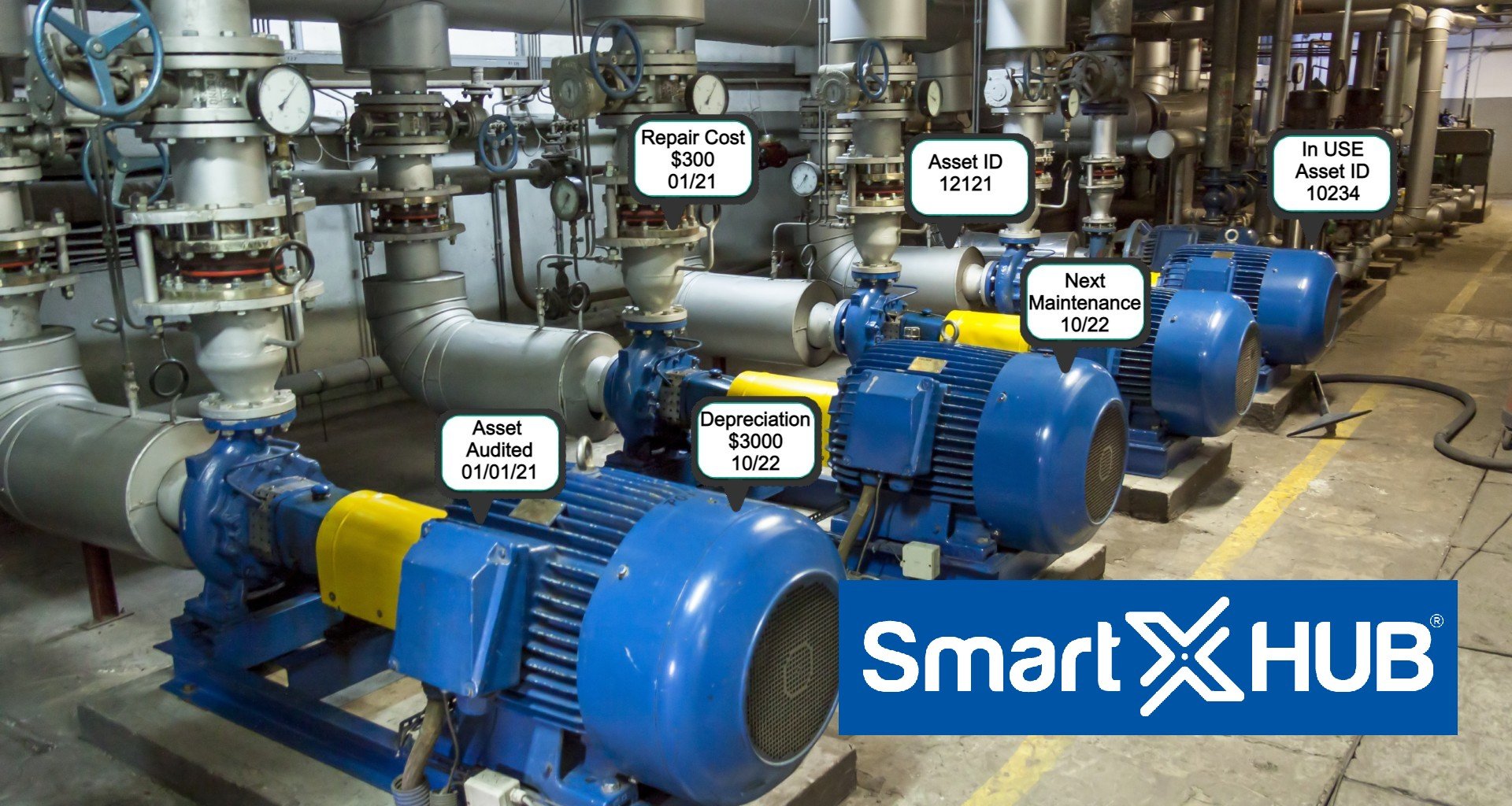Explaining Asset Life Cycle

With RFID technology, elaborate and expensive check out/in and counting by hand is no longer necessary.
Asset tracking is an easy way to study each phase of an asset’s life cycle. By gathering data points every day to evaluate run time, efficiency, and reliability, you get the ability to predict an asset’s length of service, arrange for regular maintenance, and predict the need for part replacement or upgrading.
In this article, we will share our experience and dwell on the technologies for asset management and the basics of asset lifecycle management, we’ll dive deeper into each specific stage and explain it.
Asset Life Cycle: Definition and Key Stages
Asset life cycle management means overseeing each aspect of a resource in every phase of its existence with an organization.
It begins with determining what form the asset will take, how much it will cost, and how long its lifespan should be. If the company doesn’t build and integrate the asset on its own, outside contractors may become a part of asset life cycle management.
Managing the life cycle of your assets helps to expand their ability to serve for as long as possible. It also provides vital information about the resource’s usability in real-time, which increases its efficiency and service potential for your organization.
Asset lifecycle management can include the following actions:
- Specifying what is the asset’s role in the organization
- Including the asset in the organization’s budget
- Approving the purchase or creation of the asset
- Integrating the item into an asset tracking system
- Scanning the item for regular tracing and information
- Checking for depreciation
- Seeking and installing software updates
- Initiating preventative maintenance
- Ensuring regulatory compliance
Benefits
How can we help you?
Contact us at the SmartX office nearest to you or submit a business inquiry online.
Let us know how we can help you solve your business challenges!
The Stages of Asset Life Cycle
The asset life cycle consists of six stages below.
Depending on your business and how you use the asset, these might manifest in a different order.
1. Planning
2. Procurement/Acquisition
3. Deployment/Installation
> Separate paid training sessions
> Creation of employee manuals regarding the asset
> Instructional videos and interactive displays
> Communicating the importance of safety
> Understanding and learning manufacturer’s guidance and limitations
> Online material employees can re-access
> Discussion of the importance of regular asset tagging
> Regular data analysis to better understand asset performance and input
4. Utilization/Operation
To maximize your return of investment, aim to extend the asset’s operational phase for as long as possible. This is where asset tagging, detailed observation, and using the asset within the manufacturer’s guidelines help.
Keeping the asset in this phase for the maximum amount of time requires the following:
> Immediate attention to emergency repairs
> Regular asset scanning
Ensuring employees are well-trained and supervised
> Proper cleaning procedures
> Preventative maintenance according to manufacturer’s or creator’s suggestions
> Updating licenses
Avoiding overwork
> Remaining in regulatory compliance
Depending on the projected life span of the asset, it might last a few months or several decades. Calculation of this time frame should be discussed in the planning stage, then realistically adjusted throughout the utilization and operation phase. At times, either due to an emergency or because of regularly scheduled preventative maintenance, the asset occasionally moves into the fifth phase.
5. Maintenance
During regular use, an asset should enter into the maintenance phase as little as possible, only as part of its natural wear and tear.
Maintenance works in synchronization with asset utilization. If an asset is regularly scanned, the maintenance phase reaps this information.
Technicians can reach into an asset’s data to ensure the item is operating within requirements, search for anomalies, and seek ways to fine-tune the asset for maximum efficiency.
Paying attention to proper maintenance and relying upon skilled operators to work on custom parts helps to keep the asset in the operation phase as long as necessary.
Even if an asset has surpassed its expected lifecycle, it might remain in service—as long as it’s still operating safely and correctly.
Modification might be necessary to keep the asset in good repair, but these should only take place with the designer or manufacturer’s intent in mind.
Adapting an asset from its original intent might void a warranty, wreak havoc with routine maintenance, expose an organization to legal liability, and force unintentional wear and tear.
6. Disposal
While some might be emotionally attached to an asset if it doesn’t make financial sense to keep it in operation, move on to a more efficient replacement.
Here are other aspects of disposal to consider when deciding how to eliminate an out of date asset:
> Wiping all data
> Destroying items from which data might be retrieved even after wiping
> Disassembly to smaller parts for physical removal
> Careful cleaning so that removal does not soil other equipment
The item does not necessarily have to move directly to a landfill. Some items which have outlived their usefulness in one organization might find use in another, perhaps in a different role. The donation might be a possibility.
It’s also a good idea to search for ways to recycle assets. Not only can this help your organization meet its environmental goals, but it can also make for excellent publicity and social media fodder.
Fitting asset disposal provides a satisfying closure for its lifecycle. If you have attended to all stages of the asset’s life, then it has met or surpassed its usefulness. Your business can now apply the things learned in the previous stages to procuring the asset’s replacement.
Smart asset management based on IoT and RFID

Smart asset tracking can be applied to track both lightweight tools and heavy machinery. For that, each movable asset – be it a drill or a bulldozer – gets a passive RFID tag. Each tag has an ID that carries encoded data about the asset it is attached to, e.g., its description, manufacturer, cost, condition, model, serial number, an assigned employee, location, etc.
This data is saved to the SmartX HUB data warehouse – and in-cloud data storage – upon authorizing a tag. To authorize the tag, an equipment storage yard worker scans it with a handheld RFID reader and enters the asset data via an asset tracking app. The asset tracking app forwards the data to the Platform, where the data record is stored with an “authorized” label. Once the tag is authorized, the asset tracking software receives a command to track the tag.
To enable tracking, fixed RFID readers are installed to scan the tags at the checkout area of a tool zone, at the exits of equipment storage yards, at the entrances of construction sites, and other key points.
When passively tagged movable assets leave a tool zone or an equipment storage yard, the RFID reader scans tags’ IDs at the exit and relays them to the cloud. The cloud aggregates the data from multiple readers, runs it through analytics algorithms, and identifies that the movables with the corresponding IDs have left the tool zone or the equipment storage yard. SmartX HUB Cloud software updates the data about the corresponding items in the big data warehouse and displays the updates to the users.
As the movable equipment enters the construction site, the RFID readers installed at the entrances, capture tags’ IDs and relay them to the cloud to check if all the machines and tools have arrived at the construction site.
Moreover, thanks to having several high-frequency RFID readers deployed at the key points of the company site, the asset tracking solution provides the employees with real-time data about the movements of durables, as well as their statuses. If a piece of movable equipment leaves the assigned area, is used outside of operating hours or by an unauthorized person, the asset tracking solution sends a notification to an inventory specialist.
Benefits of Asset Life Cycle Management based on IIoT and RFID
Asset life cycle management might sound like a great deal of work. Still, once it becomes integrated into a business, it becomes a natural extension of asset tagging, budgeting, and decision-making.
Paying attention to asset life cycle management can benefit a company in several ways:
- Increased organization of preventive maintenance
- Improved and more substantive contact with employees across the organization
- Enhancement of IT services
- More informed decision-making
- Better control over budgetary projections
- Increased supply chain efficiency
- Strong understanding of regulatory compliance
- Awareness of part replacement schedules
- The expectation of regular downtime
Many organizations include asset life cycle management in their internal structure, just not in a defined or formal process.
Doing so can help to clarify and streamline each aspect of asset life cycle management, passing it on to employees and allowing new team members to familiarize themselves with the process.
Staying with a workable and proven asset life cycle management optimizes staffing requirements and increases return on investment. It better leverages data and intensifies employee involvement in day-to-day operations.
IoT-driven asset tracking and inventory management lay a solid foundation for industrial process improvements and enhance the way business works. Let’s see some examples:
Healthcare
Track medical equipment to improve utilization, ensure compliance, and improve the patient experience.
Construction & Leased Assets
Track tools and construction service equipment to lower cost and streamline service. The construction crew needed the ability to track and trace the construction materials throughout the process.
Manufacturing & Automotive
Automate management of tools and equipment to improve utilization, and streamline maintenance.
Here are just a few benefits that allow enterprises to operate more smoothly:
- Automation of asset tracking and reporting. Passively tagged, the assets are scanned automatically as they move through key points within or between facilities. It frees up employees’ working time and allows them to focus on the areas that actually make a difference to the bottom line.
- Constant visibility into the statuses and movements of the assets. IoT-driven asset tracking software gives precise visibility into the flow of raw materials, components, work-in-progress, finished goods, and durable assets so that users see when a particular item enters or leaves a particular area.
- Optimization of movable equipment utilization. With RFID tags attached to the movable equipment, employees get the data about how frequently and for how long each piece of movable equipment is used. They can calculate the utilization of movable equipment pieces and take measures to reduce idle time and optimize utilization.
- Inventory optimization. Knowing the amount of inventory and its location, inventory managers can tune inventory management processes to maintain as low inventory levels as possible while fulfilling the customers’ demand at the end of the supply chain.
Different Assets have Different Life Cycles
When you decide to manage assets before even acquiring them, you conserve resources and better manage your equipment, rather than waiting for “life to happen.”
Becoming involved with the asset in every stage and paying attention to the data it provides will help to ensure it has a long and beneficial service life.
Whether an asset is recycled, sold, or scrapped at the end of its lifecycle, it will have served its purpose as efficiently as possible. Use the information provided in this article to manage your company’s assets from start to finish, and make the most of your investments.
And if you want to streamline your asset management and prolong the life cycle of your assets, sign up for a free trial here and test our software.


